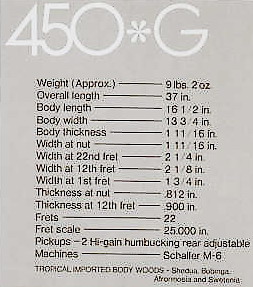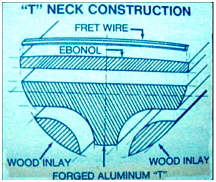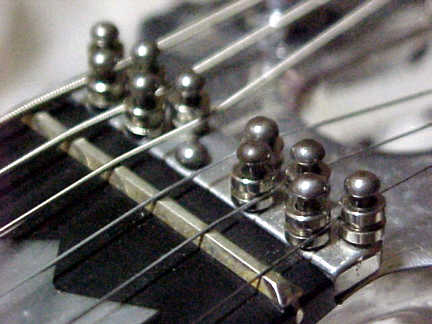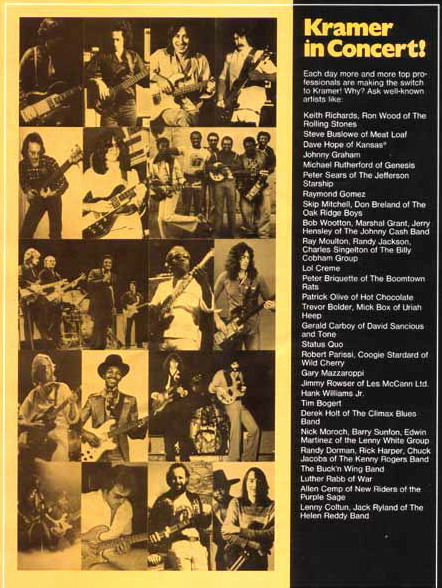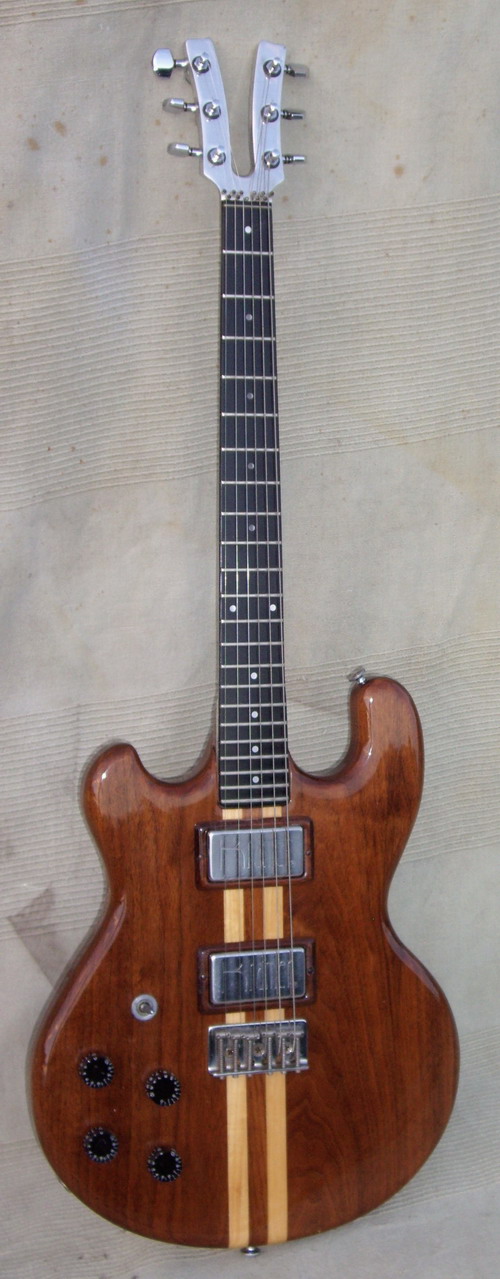

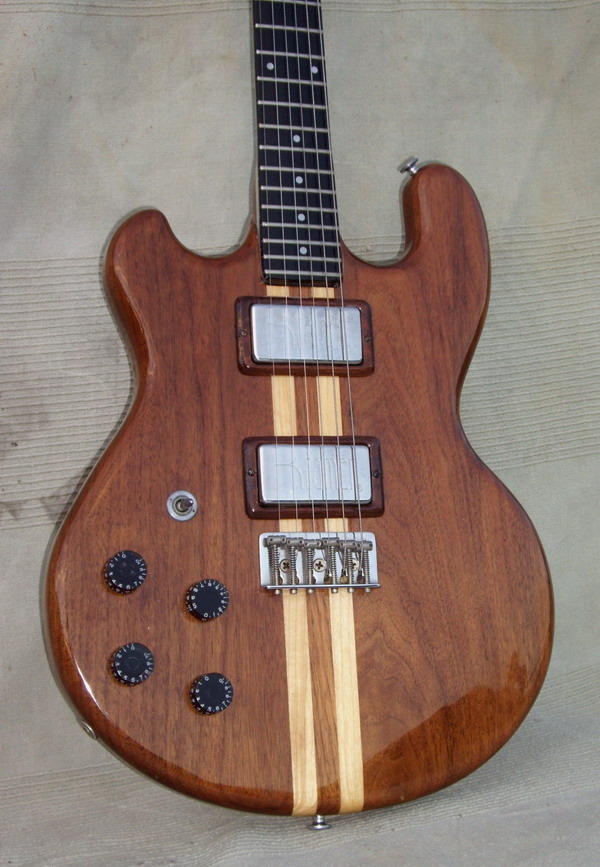
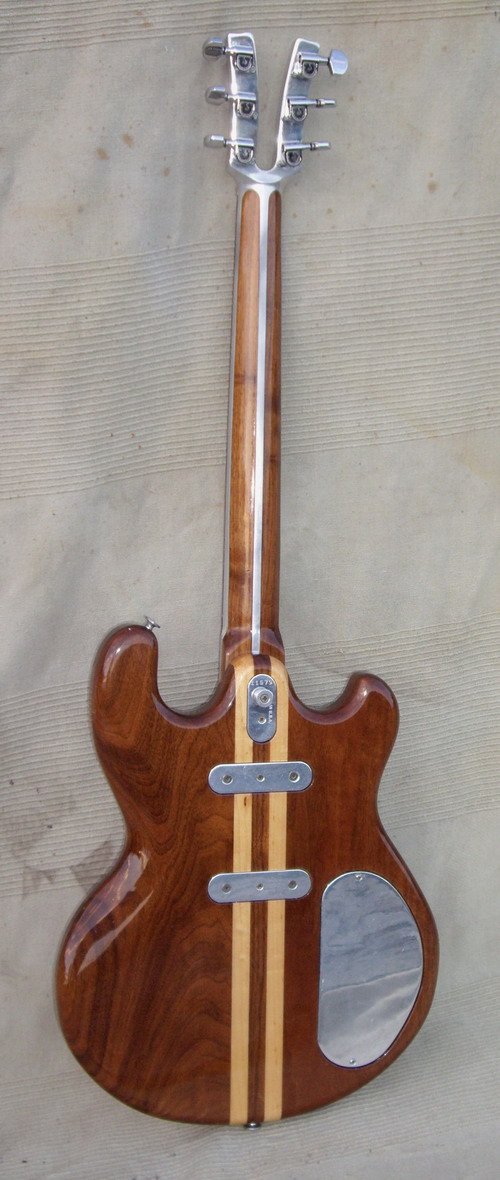
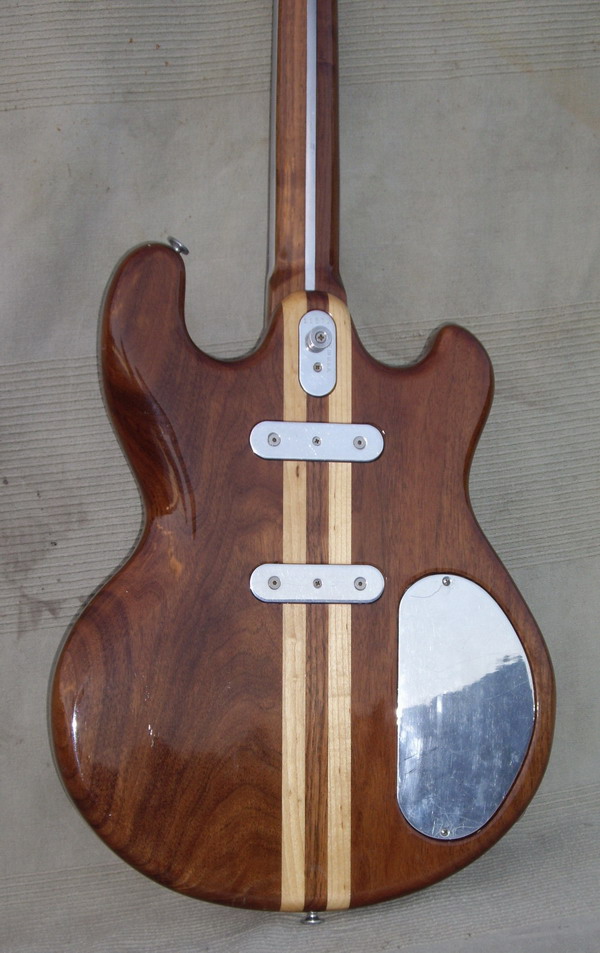
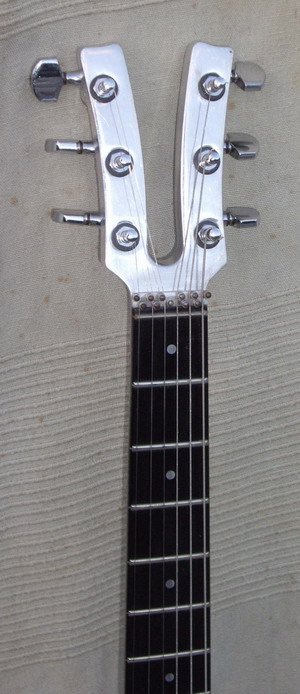
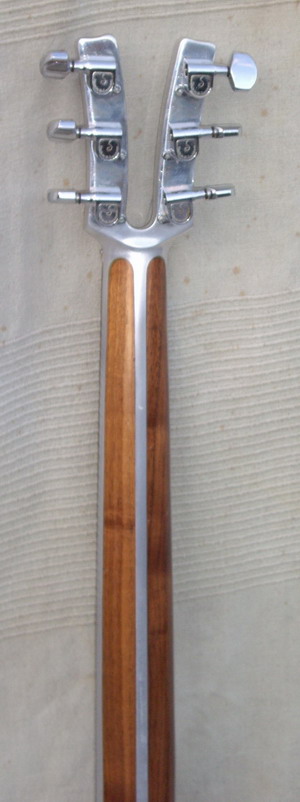
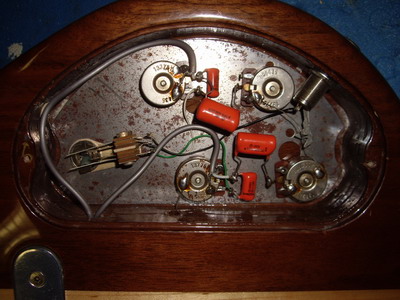
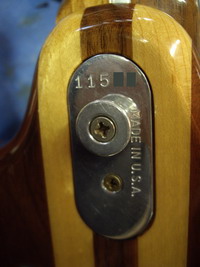
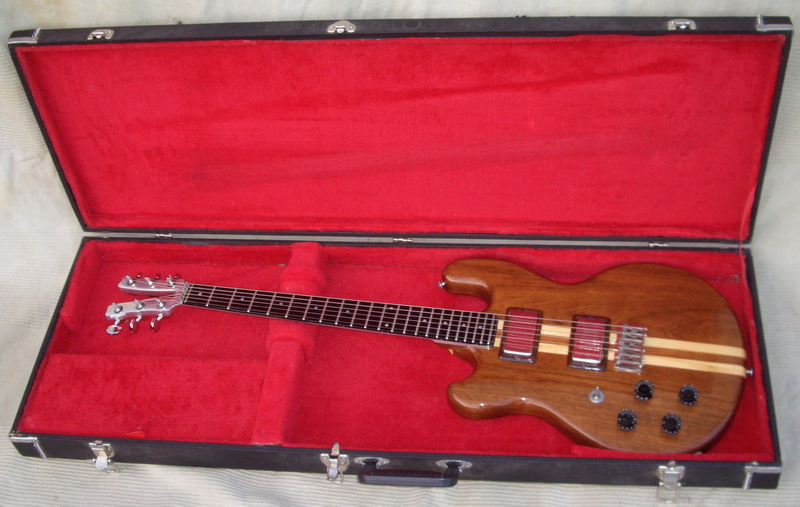
'78 Kramer 450G Natural LEFTY aluminum neck, Metal Pickups
All original parts and original electronics. The guitar is in amazing shape, plays beautifully and sounds that much better.Original pickup wood ring
https://en.wikipedia.org/wiki/Kramer_Guitars
https://www.youtube.com/watch?v=IzQpdlPNwgA
The first
run of guitars were the 450G(guitar), 450B(bass) and the cheaper 350G and 350B.
The 450s and 350s both had offset double cutaway bodies. The 450s had a walnut
body with 2 maple strips going down the middle. 450s also had 2 humbuckers, 3
way switches, 2 vol and 2 tone knobs and a combo bridge/tailpiece. The earlier
450s also had square block shaped inlays on the fretboard. In 1977, when the new
generation series came out, the 450 became the 450 Deluxe which had slightly
shorter horns.
The 350 series was a cheaper alternative to the 450s. The 350 guitar had a
smaller body and 2 single coil chrome covered pickups while the 350 bass had
only one pickup. The 350 and 450s lasted until 1979 and 1980, respectively.
The Kramer aluminum neck era ran from 1976 to 1985 and was the legacy of the company before switching over to the more popular wood neck models uring the 80s. The first production batch of Kramers were introduced in November 1976. All of these early Kramers featured a "forked" aluminum headstock and aluminum "skeletal" neck (the Dukes had no headstock). These necks, designed for sustain, contained slots that ran the length of the neck for holding the wood fills in place. (See diagram) The idea of the wood inlays were to reduce the coldness feel of aluminum. Usually but not always, the wood neck fills were the same type and color as the body. The Ebonol fretboard contained large Phil Petillo designed "center-touch" frets, a zero nut and aluminum dot inlays. The higher up models had the mother of pearl "crown" shaped inlays. Scale lengths were 25". Tuners were Schallers. They were manufactured at the Kaiser Aluminum plant on East Avenue in Erie, Pennsylvania. The necks were attached to the body by two bolts and the bolts were covered by an oval shaped aluminum plate. Control cavity covers were also aluminum. Some bass models were available fretless as well as half
Kramer Guitars emerged in the 1970s as one of the first successful upstarts to challenge Gibson and Fender as a world-wide leader in manufacturing quality electric guitars and basses. Kramer’s association with guitar virtuoso Eddie Van Halen early in his career gave Kramer a global reputation for creating unique guitars with custom features including the sophisticated Floyd Rose™ tremolo system. A generation of hard rock and metal guitarists inspired by Van Halen and including Richie Sambora, Tom Morello, Vivian Campbell, and Mick Mars, helped to make Kramer a leader in providing everyday players the experience of a “custom” designed guitar with specialty pickups and hardware, starting an industry-wide trend that continues today. Kramer Guitars was founded in 1976 and set up headquarters at the first of two factories in Neptune, New Jersey. Kramer’s early designs featured guitars and basses with aluminum necks with a distinctive “tuning fork head” headstock and Ebanol fretboards. Kramer further distinguished themselves with custom features such as high grade Schaller™ tuning keys and bridges and specially wound DiMarzio™ pickups at a time when neither Gibson nor Fender provided custom services or advertised parts made by outside manufacturers. Kramer guitar and bass necks featured aluminum inlays and a zero fret made from Petillo fretwire. Each neck had Walnut or Maple inserts set in epoxy. Bodies were made from high grade Walnut or Maple, though some early instruments also featured rare woods not typically used in guitar manufacturing such as Koa, Shedua, and Bubinga. In the early 1980s, Kramer began manufacturing guitars with wooden necks featuring the company’s unique “beak” headstock and an early version of the Rockinger™ tremolo system, an industry breakthrough that allowed for extreme tremolo bends while still maintaining the guitar’s overall tuning. In 1981, founder Dennis Berardi’s chance encounter with Eddie Van Halen led to the company’s first major endorsement deal. At the time, Van Halen was already customizing his stage and studio guitars, using different necks, bodies, and bridges from various manufacturers in an effort to find a tremolo system that would stay in tune. Van Halen’s involvement with Kramer was a watershed moment for the guitar industry. Very quickly, Kramer guitars became synonymous with Eddie Van Halen, then the most popular rock guitarist in the world. In 1983, Kramer’s original Rockinger™ tremolo system was replaced by the Floyd Rose™ tremolo system, which would remain a Kramer exclusive throughout the decade. By the mid 1980s, with the addition of famed custom pickup designer Seymour Duncan now outfitting all Kramer instruments, a new headstock design, and Schaller locking tuners throughout all American models, Kramer began expanding their line ofendorsers adding Mick Mars of Mötley Crüe and Vivian Campbell of Whitesnake. By the early 1990s, production problems in New Jersey and overseas, the re-emergence of Fender and Gibson as strong competitors, and the explosion of alternative rock acts like Pearl Jam and Nirvana, put a strain on Kramer’s finances. Kramer ceased production in 1991 and later in the decade was acquired by Gibson Music Instruments in Nashville.
